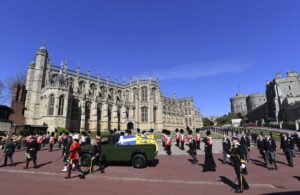London (CNN)Britain will take extra security precautions to protect Queen Elizabeth II ahead of her speech Wednesday — a member of Parliament will be held hostage at Buckingham Palace and guards with lanterns will check the cellars at the Palace of Westminster for explosives.




These are just some of the traditions that go back hundreds of years but still ornament the annual event, in which the monarch lays out the incoming government’s policy agenda and officially opens the new session of Parliament.
Here’s how the day will unfold:
Members of the Household Cavalry leave Buckingham Palace, where an MP was “held hostage” for the Queen’s speech on May 25, 2010.
Before the Queen leaves for the Houses of Parliament, a member of parliament is taken hostage and is locked away in Buckingham Palace. This tradition developed during a time when there was little trust between Parliament and the royals — the lawmaker was held to ensure the monarch’s safe return.
Charlie Proctor, editor-in-chief for Royal Central, revealed that Conservative Chris Heaton Harris would be the unlucky MP this time.
As the Queen’s security is of utmost importance, the Yeomen of the Guard, Britain’s oldest royal bodyguards, will take lanterns down to the cellars of the Houses of Parliament to search for explosives. This tradition dates back to 1605, when Guy Fawkes, with the help of 12 others, stored 36 barrels of gunpowder under the House of Lords in an attempt to blow up Parliament.
Once the Queen is satisfied that she has her hostage and that the cellars have been searched, she will leave the palace in a gilded horse-drawn carriage with the full Household Cavalry. Ahead of her in a separate carriage are the ceremony regalia — the Imperial State Crown, the Cap of Maintenance and the Sword of State.
The Queen will arrive at Parliament’s Sovereign’s Entrance and proceed to the Robing Room, where she will put on the Imperial State Crown and the Robe of State, a red velvet number with a five-meter train. She will then lead the Royal Procession through the Royal Gallery to Parliament’s upper chamber, the House of Lords. The Queen takes the gilded throne, with her husband, Prince Philip, usually seated on a lower throne beside her.
Then comes the real theater. The Queen will send a House of Lords official known as the Gentleman Usher of the Black Rod to the lower House of Commons. The usher carries, well, a black rod, which he bangs on the House of Commons door — only to have the door open and then slammed shut in his face. This tradition symbolizes the House of Commons’ independence from the monarchy. While the Queen is the head of state, she is not the head of government, and this separation is taken seriously in the UK. After the usher knocks three times, the MPs emerge and follow him to the House of Lords. It is here that the Queen gives her speech — as a royal, she is not allowed to set foot in the House of Commons.
The speech
The speech is actually written by the government; it is just delivered by the Queen. The monarch must be careful here to show no approval or disapproval for any particular policy, as she is supposed to be an apolitical head of state.
Once the speech is delivered, a new parliamentary session begins. Both houses debate the content of the speech and agree to a response to the Queen. The speech is voted on by the Commons, but rarely by the Lords. – CNN




